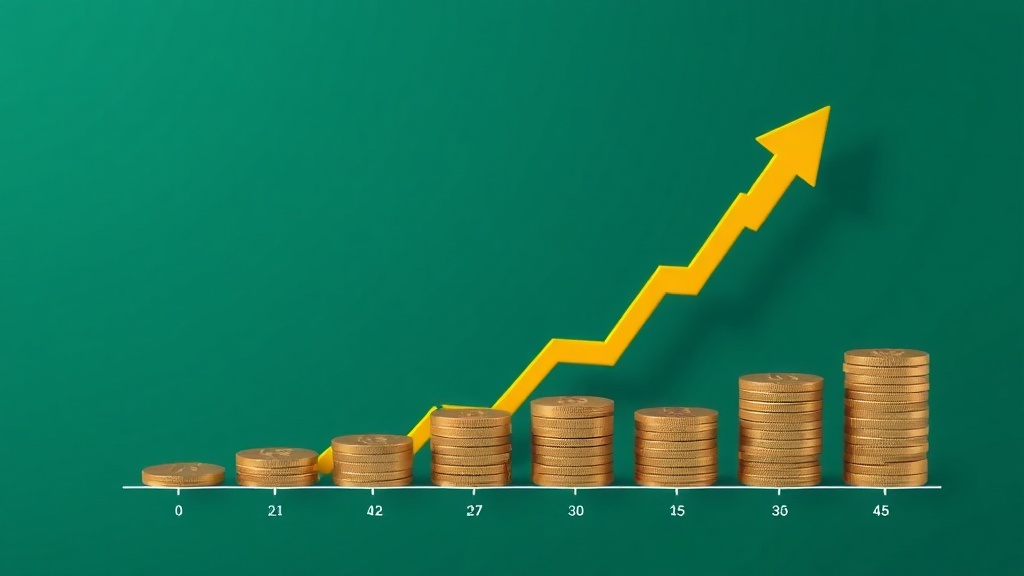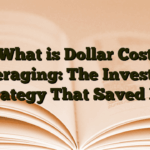How Does Compound Interest Work: The Money Multiplier Explained
Compound interest is the closest thing to magic in personal finance. It’s the reason someone who saves $200 a month starting at age 25 ends up with twice as much money as someone who saves the same amount starting at age 35. It’s also why your credit card debt feels impossible to escape.
I spent years not understanding this concept. I thought saving money was linear – put in $100, get back $100 plus a little interest. When I finally grasped how compounding actually works, everything changed. My entire approach to money shifted overnight.
Let me show you exactly how compound interest works, why it matters more than almost anything else in finance, and how to make it work for you instead of against you.
What is Compound Interest and Why Should You Care?
Compound interest means earning interest on your interest. That sounds simple, but the implications are profound.
Here’s the basic idea: when you invest $1,000 at 5% annual interest, you earn $50 in the first year. Your account now has $1,050. In year two, you don’t just earn 5% on your original $1,000 – you earn 5% on the full $1,050. That’s $52.50 instead of $50.
The difference seems tiny. But over time, these small differences compound into massive wealth gaps.
After 30 years, that original $1,000 at 5% annual interest would grow to about $4,321 with compound interest. With simple interest (only earning on the original amount), you’d have just $2,500. That’s a 73% difference from the same initial investment.
Albert Einstein allegedly called compound interest “the eighth wonder of the world.” Whether he said it or not, the sentiment is accurate. Understanding the difference between trading and investing starts with grasping this fundamental concept.
The Math Behind Compound Interest (Without the PhD)
The compound interest formula looks intimidating at first:
A = P(1 + r/n)^(nt)
Here’s what each letter means:
- A = the final amount you’ll have
- P = the principal (your starting amount)
- r = the annual interest rate (as a decimal, so 5% = 0.05)
- n = how many times per year interest compounds
- t = the number of years
Let’s use a real example. Say you invest $5,000 at 7% annual interest, compounded monthly, for 20 years.
A = 5000(1 + 0.07/12)^(12×20)
A = 5000(1.00583)^240
A = 5000(4.038)
A = $20,190
Your $5,000 turned into $20,190. You contributed $5,000 and compound interest generated $15,190 in growth. That’s the power of letting time and compounding do the heavy lifting.
The Rule of 72: Your Quick Doubling Calculator
Memorizing formulas is overrated. The Rule of 72 gives you a fast way to estimate how long it takes your money to double.
Just divide 72 by your annual interest rate (as a whole number, not a decimal).
Years to Double = 72 ÷ Interest Rate
Examples:
- At 6% annual return: 72 ÷ 6 = 12 years to double
- At 8% annual return: 72 ÷ 8 = 9 years to double
- At 10% annual return: 72 ÷ 10 = 7.2 years to double
This rule works in reverse too. If inflation runs at 3%, your money’s purchasing power gets cut in half every 24 years (72 ÷ 3). If you’re carrying credit card debt at 24% APR, your debt doubles in just 3 years if you don’t pay it down.
An investor managing $900 million recently said the Rule of 72 should be taught in elementary school. I agree completely. This simple calculation would change how millions of people think about money.
Real Examples: Starting Early vs Starting Late
The math is one thing. Real-world scenarios make the impact crystal clear.
Example 1: Sarah vs Michael
Sarah starts investing $200 per month at age 25. She earns an average 7% annual return. By age 65, she’s contributed $96,000 total and her account is worth $525,000.
Michael waits until age 35 to start. He invests the exact same $200 per month at the same 7% return. By age 65, he’s contributed $72,000 and his account is worth $244,000.
Sarah started just 10 years earlier. She contributed only $24,000 more. But she ended up with $281,000 more than Michael. That extra decade of compounding made all the difference.
Example 2: The Single Investment
Let’s say you invest $10,000 one time at age 25, earning 8% annually, and never add another dollar. By age 65, that single $10,000 investment grows to $217,000.
If you wait until age 35 to make that same $10,000 investment, it only grows to $100,000 by age 65. Waiting 10 years cost you $117,000 in growth from the exact same initial investment.
Time is the most powerful variable in the compound interest equation. You can’t buy more time later. This is why avoiding common investing mistakes includes starting as early as possible, even with small amounts.
How Compounding Frequency Affects Your Returns
Interest can compound at different intervals – annually, quarterly, monthly, or even daily. The more frequently it compounds, the more you earn.
Here’s how $10,000 at 5% annual interest for 10 years grows with different compounding frequencies:
- Annually: $16,289
- Quarterly: $16,436
- Monthly: $16,470
- Daily: $16,487
The difference between annual and daily compounding is $198 – not huge, but free money is free money. When comparing savings accounts or investments, look for the APY (Annual Percentage Yield) rather than just the interest rate. APY accounts for compounding frequency and shows your true return.
Most high-yield savings accounts compound daily. Investment accounts typically compound based on dividend payment schedules. Dividend stocks that pay quarterly give you four compounding opportunities per year if you reinvest those dividends.
The Dark Side: When Compound Interest Works Against You
Compound interest is a double-edged sword. It builds wealth when you’re the one earning it. It destroys wealth when you’re the one paying it.
Credit card debt is compound interest weaponized against you. Let’s say you have a $5,000 balance on a card with 24% APR. If you only make minimum payments, that debt compounds monthly.
After one year, assuming minimum payments of around 2% of the balance, you’ll have paid roughly $1,000 but your balance will barely budge. Most of your payment went to interest. The remaining balance continues compounding.
At this rate, it would take over 30 years to pay off that $5,000 balance, and you’d pay more than $10,000 in total interest. You’d pay three times what you originally borrowed.
This is why paying off high-interest debt should be your first financial priority, even before investing. If your investments earn 8% but your credit card charges 24%, you’re losing 16% annually by keeping that debt around. The math is brutal.
Common Compound Interest Mistakes That Cost You Thousands
I’ve made most of these mistakes. Learning from them was expensive.
Mistake 1: Not Starting Early Enough
Every year you delay is a year of compounding you’ll never get back. Starting at 25 versus 35 can mean a difference of hundreds of thousands of dollars by retirement, even with identical contributions.
Mistake 2: Withdrawing Your Earnings
When you pull money out, you reset the compounding clock. That $1,000 withdrawal today might have been worth $7,000 in 30 years. Keep your hands off the money and let it compound.
Mistake 3: Paying High Fees
A mutual fund charging 1.5% annually versus an index fund charging 0.05% might not seem like a big deal. But over 30 years, that fee difference compounds dramatically. On a $100,000 portfolio growing at 7%, the high-fee fund would cost you over $50,000 in lost growth compared to the low-fee option.
Mistake 4: Stopping Contributions During Market Downturns
When the market drops, your contributions buy more shares at lower prices. Those shares then compound as the market recovers. Stopping contributions during downturns is exactly backwards – you want to keep buying when prices are low.
Mistake 5: Underestimating the Power of Small Amounts
People think they need thousands to invest. They’re wrong. Even $50 a month compounds into real money over time. At 8% annual return over 30 years, $50 monthly becomes $74,000. That’s significant wealth from coffee money.
Just like understanding proper risk management in trading, avoiding these compound interest mistakes is about protecting and growing your wealth systematically.
Maximizing Compound Interest: Practical Strategies That Work
Theory is great. Application is better. Here’s how to actually make compound interest work for you.
Strategy 1: Start Immediately (Even with $25)
Time is more valuable than amount. A $1,000 investment at age 20 beats a $10,000 investment at age 50, assuming the same return rate. Open an account today, even if you can only contribute a small amount. You can always increase contributions later.
Strategy 2: Automate Your Contributions
Set up automatic transfers from checking to your investment account. You can’t spend money you never see. Automation removes willpower from the equation and ensures consistent contributions that compound over time.
Strategy 3: Reinvest All Dividends and Distributions
When your investments pay dividends, reinvest them automatically. This supercharges compounding by immediately putting that money back to work earning more returns. Most brokers offer automatic dividend reinvestment (DRIP) at no cost.
Strategy 4: Minimize Taxes in Tax-Advantaged Accounts
401(k)s, IRAs, and HSAs let your money compound tax-free or tax-deferred. Every dollar you’d pay in taxes stays invested and compounds. Over decades, this creates massive wealth differences. Max out tax-advantaged accounts before investing in taxable accounts.
Strategy 5: Increase Contributions When You Get Raises
When your income increases, boost your investment contributions by at least half the raise amount. You won’t miss money you never spent, and those extra contributions have years or decades to compound.
Strategy 6: Focus on Low-Cost Index Funds
Fees are compounding in reverse. A broad market index fund with a 0.03% expense ratio lets almost all returns compound. An actively managed fund with a 1.5% expense ratio steals compounding power every single year. Keep fees as close to zero as possible.
How Compound Interest Applies to Different Accounts
Different account types compound differently. Understanding these differences helps you optimize your strategy.
High-Yield Savings Accounts
These typically compound daily and pay interest monthly. Current rates (as of 2025) range from 4% to 5% APY at top online banks. Great for emergency funds and short-term savings, but returns barely beat inflation over time.
Certificates of Deposit (CDs)
CDs lock in a fixed rate for a set term. They compound at the interval specified (usually monthly or quarterly). Returns are higher than savings accounts but lower than long-term stock market returns. Good for money you won’t need for 1-5 years.
Investment Accounts (Stocks, Bonds, Funds)
Investment returns come from two sources: price appreciation and dividends/interest. When you reinvest dividends, you create true compounding. Over the long term (20+ years), stock market returns average 7-10% annually after inflation. This is where serious wealth compounding happens.
Retirement Accounts (401k, IRA)
These work like regular investment accounts but with tax advantages that supercharge compounding. Traditional accounts let contributions compound tax-deferred. Roth accounts let contributions compound completely tax-free. The tax savings mean more money stays invested and compounds.
When you understand how to read a balance sheet, you can better evaluate which companies to hold long-term for compounding growth.
Calculating Your Own Compound Interest
You don’t need to do the math by hand. Free online calculators do the heavy lifting.
To use a compound interest calculator, you need:
- Initial deposit amount
- Regular contribution amount and frequency (monthly, quarterly, etc.)
- Expected annual interest rate or return
- Number of years you’ll invest
- Compounding frequency
Plug in your numbers and experiment with different scenarios. What happens if you increase monthly contributions by $50? What if you start five years earlier? What if you get a 1% higher return?
These calculators make the abstract concept of compounding concrete. Seeing that an extra $100 per month turns into $120,000 over 30 years makes the sacrifice feel worthwhile.
The Bottom Line: Time Beats Timing
People obsess over finding the perfect investment or timing the market perfectly. They’re optimizing the wrong variable.
Time in the market beats timing the market. Compound interest doesn’t care if you bought at the top or bottom of a market cycle. It cares about how long your money stays invested and compounds.
Someone who invested $10,000 at the 2007 market peak right before the 2008 crash still ended up with over $40,000 by 2024 if they held through the volatility and reinvested dividends. That’s the power of compounding over time.
The single best financial decision you can make is starting now. Not tomorrow. Not next month when your budget is “better figured out.” Today.
Even if you can only invest $25 this month, do it. That $25 could be worth $500 in 30 years at reasonable return rates. More importantly, you’ll have started. And starting is the hardest part.
Compound interest is patient. It rewards patience. Give it time, feed it consistently, and don’t interrupt it. That’s the formula for building real wealth – not through lucky trades or perfectly timed investments, but through the simple, powerful math of letting your money multiply itself over time.






